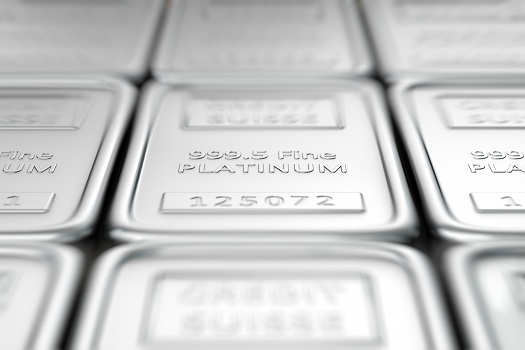Shine Loss in Platinum
While gold gets a lot of attention in the world of precious metals, platinum is an equally appealing option. In fact, platinum’s value often exceeds that of gold. It’s also a type of metal that won’t tarnish, which can make it a smart purchase in physical form. However, you may wonder if platinum will lose its shine at some point. Even if they prefer to buy gold bars or silver bullion, Scottsdale precious metals collectors might be interested in the following facts about the appearance of this precious metal and how it can be affected.
Scratching Can Affect Shine
Platinum may lose its shine if it becomes scratched. This can happen with normal handling or accidental dropping and similar actions. When platinum does get scratched enough to lose some of its shine, it actually loses very little of its volume. On the plus side, scratches can give some platinum items, such as jewelry, an antique look. But if this isn’t something you appreciate, scratches can be polished out because of the low volume of metal loss.
Platinum-Plated Items Can Also Become Less Shiny
If you have platinum-plated items in your collection, they can lose their shine with age. When there’s another metal under the platinum, this reduced shine can allow the color of the metal underneath to come through. Fortunately, this is a problem that can be remedied by applying a new rhodium-plated finish. Rhodium is also a precious metal that’s in the platinum family. It’s often used on white gold jewelry with platinum finishes.
Platinum Coins & Bars Can Be Polished, Too
For a precious metal to be onsidered platinum, it needs to contain at least 95 percent of this particular metal. The good news is if you purchase bullion in the form of platinum bars or coins, they’ll likely retain their shine for many years, especially if you’re mindful about their storage and care.
Over time, platinum coins and bars may still lose some natural shine due to the formation of patina. This is a thin green or brown film that can appear on the surface of metals like platinum due to age and the process of oxidation. If the patina is thin enough, there may be no color change at all. Instead, you may notice your platinum bullion is darker and consequently less shiny. This is something that’s also often correctable with proper polishing techniques.
Caring for & Cleaning Platinum
Platinum is ahighly durable metal in any solid form. It also handles scratches and age-related wear and tear well. You can help your platinum remain nice and shiny for many years with regular care and cleaning if you have concerns about a loss of shine. This typically involves:
• Occasional cleaning with mild soap and water
• Using a soft toothbrush along with the mild soap and water if you’re noticing patina
• Regular cleaning with a soft, lint-free cloth
• Professional buffing to remove minor finish or surface flaws
Platinum can be a fantastic addition to any precious metals collection, and you can trust you’ll get what you pay for when you buy platinum from a reputable firm such as First National Bullion. Scottsdale residents can rely on our professionalism and expertise when they’re ready to invest in platinum, gold, and other precious metals. Give one of our experienced dealers a call today at 480-546-8928.
The statements made in this blog are opinions, and past performance is not indicative of future returns. Precious metals, like all investments, carry risk. Precious metals and coins may appreciate, depreciate, or stay the same in cash value depending on a variety of factors. First National Bullion does not guarantee, and its website and employees make no representation, that any metals for sale will appreciate sufficiently to earn the customers a profit. The decision to buy, sell, or borrow precious metals and which precious metals to purchase, borrow, or sell are made at the customer’s sole discretion.


